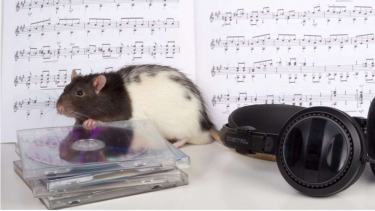- skynews.com
VIVA – Lately, there has been a strange discovery by scientists, as it turns out, rats have rhythm and love to follow the beat of Lady Gaga and Queen songs.
The study began when researchers at the University of Tokyo played music for ten rats, equipped with wireless accelerometers to measure their head movements, according to research published on Friday, last week, as reported in the Science Advances journal, November 14, 2022.
The music played was Born This Way by Lady Gaga, Another One Bites the Dust by Queen, Mozart's Sonata for Two Pianos in D Major, Beat It by Michael Jackson, and Sugar by Maroon 5.
Lady Gaga
- Eat This
The one-minute song sections were played at four different speeds for 10 rats and 20 human participants. The study found that rats and humans had the best beat synchronization in the range of 120 to 140 beats per minute.
The scientists were trying to figure out if mice prefer faster beats than humans. They thought it would correlate with physical factors such as heart rate and body size.
The results revealed that rats managed to keep up with all the songs when they were played at 132 beats per minute, just like humans. But the study showed that they liked it less when the song was slowed down or sped up.
"The rat beat results showed that, without prior training or exposure to music, beat synchronization was most obvious within 120-140 bpm (beats per minute), where humans also showed the most obvious beat synchronization," Professor Hirokazu Takahashi from the University of Tokyo remarked.
Ilustrasi Musik
- pixabay
The team also found that both rats and humans moved their heads to the beat with the same rhythm, and the rate of head jerks decreased as the music sped up.
"To the best of our knowledge, this is the first report of innate beat synchronization in animals that are not achieved through training or exposure to music," Hirokazu Takahashi added.
Researchers on the project say their discovery feels like an insight into the creation of music itself.
"Furthermore, I want to reveal how other musical properties such as melody and harmony relate to brain dynamics. I am also interested in how, why, and what kind of mechanisms the brain creates in human cultural fields such as art, music, science, technology, and religion," Takahashi explained.
"I believe that these questions are key to understanding how the brain works and developing the next generation of AI (artificial intelligence). Also, as an engineer, I am interested in the use of music for a happy life." Takahashi added.























